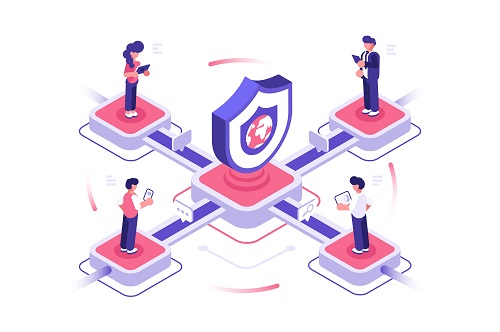How to Maintain eDiscovery Data Integrity
Emails, text messages, legal documents, written letters, faxes, and more: your eDiscovery team sorts, reviews, and analyzes all of these documents and more during the span of a legal case. When handling these confidential documents, it is important to keep these documents safe and secure.
As a vital part of the Electronic Discovery Reference Model (EDRM), any data collected is done so with the intent to capture it exactly as intended or as it was actively being used. This ensures the searchability and traceability of your data so it can be properly collected, indexed, and documented for use in litigation.
To simplify this for eDiscovery, data integrity means ensuring the legal data you collect is accurate and consistent throughout its lifecycle. Maintaining eDiscovery data integrity is not only vital for the privacy and protection of your clients, but also for the integrity of your legal investigation.
At CloudNine, we take data integrity very seriously. Read on to learn about our recommended best practices for maintaining data integrity during your eDiscovery process or learn how we put those best practices into play with CloudNine Explore here.
Protecting the Quality of Your eDiscovery Data
Data types are constantly evolving. By 2025, the number of IoT devices deployed globally will surpass 25 billion.
The variety, velocity, and complexity of electronic evidence multiply with each new generation and innovation of data technology. While email, spreadsheets, and documents are still the primary form of data collected, social media, streaming data, and data products continue to rise in prevalence.
This rise in data types means your vigilance must increase with the introduction of each new technology or update with the average U.S. civil case collecting 130 GBs of data the average U.S. civil case collecting 130 GBs of data.
To protect your clients and your firm, know the factors which can affect your eDiscovery data integrity:
- Mistakes due to human error: Your eDiscovery data integrity can become jeopardized any time human involvement is required. Data can be input incorrectly, duplicated, or deleted. Protocols, methods, or procedures can be ignored or designed incorrectly.
- Transfer errors: If your eDiscovery data isn’t transferred properly from one database to another or if one is damaged or compromised, your file could become fragmented or corrupted.
- Viruses or malware: Any outside software that can infiltrate your network has the potential to alter, erase or steal critical data.
- Compromised hardware: Any time your network experiences a significant failure like a computer or server crash, your hardware can become compromised. This could cause your eDiscovery data to be corrupted or inaccessible.
To ensure the quality of your eDiscovery data, you need to adopt a proven data collection solution that can operate efficiently, securely, and in a forensically sound manner. This means there’s no question concerning the quality of your data or any copies made. It also needs to be able to:
- Work with modern data types
- Work with a variety of data types
- Pull many different fields of data
When you are able to easily and securely perform eDiscovery data collection, your legal team will be able to take on more cases and increase margins for your LSP. Learn more about this in our eBook: 4 Ways Legal Service Providers Can Build Value and Boost Margins.
Best Practices for Ensuring eDiscovery Data Integrity
To ensure eDiscovery data integrity for your clients, implement the following best practices:
- Understand Your eDiscovery Solution: Knowing the capabilities and limitations of your data collection software allows you to use it in the most efficient manner possible.
- Validate the Data: Confirm the data you collect is correct before you upload it to your server.
- Implement Access Controls: Only necessary personnel should have access to the data so there’s less chance of data being compromised or corrupted.
- Maintain an Audit Trail: Any change to the data can have an impact on your litigation, so you need to know who touched what files when they accessed them, and what they did to them.
- Backup Your Data: Regularly scheduled and reliable data backups are essential in the event of data loss.
- Deploy Cybersecurity Measures: From timely software patches to limiting physical access to computers and servers, all known security vulnerabilities should be monitored and secured to prevent outside interference.
- Workforce Training: Every member of your team that has access to the data should be trained to follow data integrity guidelines to ensure the reliability of the data.
How CloudNine Explore Helps You Ensure eDiscovery Data Integrity
Data integrity is the foundational element to your eDiscovery process. With CloudNine Explore, you can ensure you get it right through our innovative approach to eDiscovery data collection:
- Navigate through data to determine risk, scope, and cost up-front
- Review new data with automated and in-person processes
- Securely upload, process, and preserve data critical to your investigation or litigation
- Step-by-step and advanced user workflows
- Data, domain, file type, and additional filtering
- Search term testing and reporting
- File copies are created when exported
- Provide information as required for legal production or continued investigation
Make your cases defensible and your firm profitable with eDiscovery solutions from CloudNine. With easy-to-deploy solutions that protect your eDiscovery data integrity, CloudNine is flexible and adaptable to meet any eDiscovery needs you have. Schedule a free demo today.























